Was writer Clark Ashton Smith a secret member of a deranged alchemical brotherhood who sought to create the Philosopher’s Stone? Were his strange sculptures merely discarded examples of that endeavour, leached of their divine spark ? No. He wasn’t, they weren’t, and we’re very sorry.

However, Smith was credited with the creation of the legendary Book of Eibon, used in stories by both him and H P Lovecraft, and the invention of the monstrous Ubbo-Sathla. Both of these are relevant to today’s little exploration of The Arte Mephitic a new project by author and poet Phil Breach and artist and illustrator Russell Olson.
We’re giving you a proper greydogtales introduction to the project, along with a lovely extract of what you will find therein. But only after we’ve meandered a little, of course…
Getting Noxious
What is ‘mephitic’, when it’s at home? This is the question you probably didn’t ask, but the one we will answer. It’s what we do. The use of the word mephitic in the English language comes from at least the early 1600s, from the Latin mephitis, a noxious vapour. And thus it means ‘offensive in odour’ or poisonous.
This might not seem very interesting, except that the concept of noxious and poisonous vapours was once personified by the goddess Mephitis (or Mefitis) in Roman mythology. She represented the spirit of those areas such as swamps and volcanic zones where toxic gases arouse from the earth.
Mefite is the Italian for a fumarole, a fissure in the ground which emits various gaseous clouds and vapurs. These are also called solfatare (‘sulphur-earth’), but there is a specific Solfatara volcano in Italy near Naples where the ancient Romans would rest on their travels and pay homage to the goddess by performing animal sacrifices using the fissure’s deadly gases.
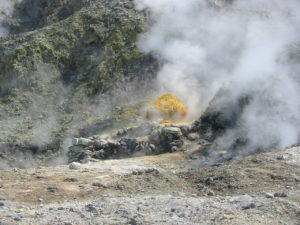
For extra mephitic fun, there’s an archaeological site, again in Southern Italy, at the Ansanto Valley which is better known as, yes, Mefite. There they have a nice little sulphurous lake, formed by a pool of water that boils as a result of the gas emissions of the subsoil, consisting primarily of carbon dioxide and sulphuric compounds. Because of these poisonous emissions, the surrounding area is free of animals and vegetation.

Toxic trivia: Fans of Frank Herbert’s Dune may recollect that Baron Harkonnen’s mentat dies due to a mephitis from the captured Duke Leto Atreides, an exhalation of poisonous gas.
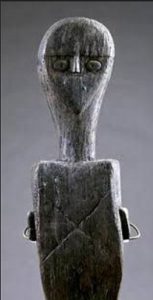
You might like the fact that among the ruins in the Mefite area, they have discovered xoana, wooden torso sculptures, which are found there in good preservation thanks to the conditions. These look rather like crude Clark Ashton Smith sculptures, which seems to fit nicely.
Note: None of this has anything to do with Mephistopheles, by the way, if you were clutching at that possibility.
Ubbo-Sathla

Back to weird fiction. The Arte Mephitic has direct and crucial references to Ubbo-Sathlo, a sort of god in its own right, which Smith described thusly:
“There, in the grey beginning of Earth, the formless mass that was Ubbo-Sathla reposed amid the slime and the vapors. Headless, without organs or members, it sloughed from its oozy sides, in a slow, ceaseless wave, the amoebic forms that were the archetypes of earthly life. Horrible it was, if there had been aught to apprehend the horror; and loathsome, if there had been any to feel loathing. About it, prone or tilted in the mire, there lay the mighty tablets of star-quarried stone that were writ with the inconceivable wisdom of the pre-mundane gods.”
Clark Ashton Smith, ‘Ubbo-Sathla’ (1933)
This demi-urge is not one you’d like to meet. Although Ubbo-Sathla had a creative side, the touch of its tendrils is fatal. Having spawned all life – which would make it the original primordial soup – some believe that Ubbo-Sathla will in turn re-absorb all life back into itself. You can read more about theories of Ubbo-Sathla at nifty sites such as Lovecraftian Science: ubbo-sathla
Eibon
A certain well-known book is also important to the unwholesome activities described in The Arte Mephitic…
“. . .The Book of Eibon, that strangest and rarest of occult forgotten volumes … is said to have come down through a series of manifold translations from a prehistoric original written in the lost language of Hyperborea.”
also Clark Ashton Smith, ‘Ubbo-Sathla’ (1933)
The Book of Eibon itself was written by the ancient and legendary wizard Eibon of Mhu Thulan. Eibon was introduced in Smith’s story ‘The Door to Saturn’ as a priest of Tsathoggua. The book supposedly chronicled his life, the nature of his magicks and the general setting around him, including details of other mages. He lived in a five-storey, five-sided tower made of black stone that stood beside the sea on Mhu Thulan. After his mysterious disappearance, his apprentice, Cryon of Varaad, produced the Book from the tower.
“The Book of Eibon also contains a huge number of spells, too large too list here. Among them are the procedures required to create a spatial gateway, numerous prayers to Tsathoggua, an incantation used to call one of the former’s children to you, how to make protective symbol effective against the servants of Nyarlathotep, a simple spell to raise a small curtain of mist and a potent curse to cripple a foe. It is said that the early edition contained a formula capable of calling a Dhole to Earth and controlling it.”
Yog-sothoth.com
It also appeared in a number of HPL’s stories, including ‘The Dreams in the Witch House’, ‘The Horror in the Museum’ and ‘The Shadow Out of Time’. It was mentioned in “The Haunter of the Dark” as the Liber Ivonis.
The Arte Mephitic
With your background reading out of the way, we’ll get to the target material. The creators describe The Arte Mephitic thus:
“The project consists of verse and lithograph illustrations in the style of early chapbooks. The Arte Mephitic is a dark and lyrical cautionary tale told over 52 rhyming quatrains of iambic pentameter, provides a grim, vivid, magickal account of a man’s search for life eternal, and the depths to which he would plumb to attain it.
“As well as drawing inspiration from the works of H P Lovecraft and Clark Ashton Smith, we’ve been using the 1882 publication Chap-Books of the Eighteenth Century by John Ashton as an expert guide to crafting an authentic mock chap-book. The book is a Victorian’s look on the penny-press of yesteryear, as well as a meaty reprinting of over 100 chapbooks. We were particularly taken with the look and feel of The History of Dr. John Faustus, God’s Judgement on Blasphemers and The Witch of the Woodlands. Russell has also used the book as a style-bible, meticulously designing every aspect of the illustrations to keep within referenceable precedents.
Let’s have a proper look, via this exclusive extract.
The Arte Mephitic – Verse by Phil Breach
The Moil was made, but 'twas frangible and sickly; I laid analgesic hexes close around it. From its soft and mottled rind a pus wept thickly. 'Twas nigh-on dead ere vigor fully found it. Of a lake within a grotto North of North 'tis writ, in palaeogaean lore: from a boneless ooze therein, rude life spews forth to flop and writhe and gibber 'pon the shore. Some name it Unclean Abhoth, source of aught impure; No. 'Tis Ubbo-Sathla, protoplasmic Prime. I would trespass there to claim the Moil's cure, and so steal a merest gobbet of its slime. The fae returned, its closest yet to dead, with a fuming grimoire picking at its seams. I trapped the Book twixt tourmaline and lead, shrouding it and muffling its screams. The puck was ruined. No aid could I provide, as Eibon's bale worried at its matter. I heard the tome's low chuckle as it died; a mere gory drizzle falling in a patter. 'Twixt them, coffer-bound, the liches bore the Book, so, with organ gathered up in my embrace, I prepared to prise a tesseractic nook, and travel down the cracks inside of space. The Moil gave a hopeful, fluttering spasm as I incised a Gate of Janus 'pon the air. We slipped out and up a wrongly-angled chasm To fogged Y'qaa, and Ubbo-Sathla's lair. We sidewise stepped unto a bleary gloom, and through that vapored subterrane we crept. Sweltering it was, the air a fume. Inchoate Y'qaa, where Life's Dawn slept. Soft approaching 'neath the vaulted dim, I spied a roiling churn amidst the gloaming; a ghastly trine of sentry shoggothim, 'pon the shores of Ubbo-Sathla's lake were roaming. I unlocked the chest, snatched out the snarling text, and rifled through its pages 'til I found a cant to leave these frothing horrors hexed, and shedding off their substance 'pon the ground. Through a thousand mouths they squealed and mewled and shrieked as Eibon's malice chewed them to a chyme; putrescent pools of scum that foamed and reeked as they slowly oozed their way back to the Prime. I gazed down o'er that bloat, primeval paste, lit about by lucent, drifting spores. Slippery, half-formed efts fought through its gummy waste, to throw themselves a-quiver 'pon its shores. I watched them struggling up the foetid beach, and bawling out triumphant at the top, but as they drew beyond their parent's reach they came undone, collapsing to a slop. It had dwelt within that stinking, soiled lagoon for as long as waves had slapped against the strand. When Earth was newly-mothered with its moon, and the Elders held their sway o'er sea and land. From a case I drew a small syringe; A crystal phial with tarnished silver snout. I silent stole to Ubbo-Sathla's fringe, jabbed it in and drew some substance out.
Given the nature of the verse and the cunningly wrought illustrations, we would think that many classic Lovercraftians and Smithites (?) would find the project of great interest. We certainly enjoyed reading it. Yes, we’ve seen the whole thing. Greydogtales perks.
If you want to nab a copy, you should have a look at their Kickstarter campaign, which is up until early Wednesday 30th November 2016. Click the link below:
It’s going well, and with a touch more support, they’ll hit their goal (UPDATE – THEY DID).
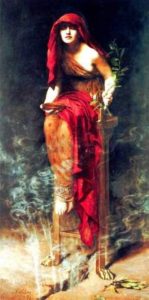
There’s an enormous amount of weird news to convey, so we’ll be back in a day or so with lots more new books and ideas. And Lurchers for Beginners: Poo is nearly finished as well…
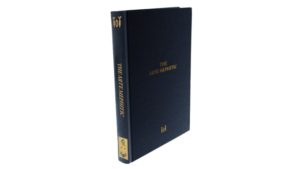
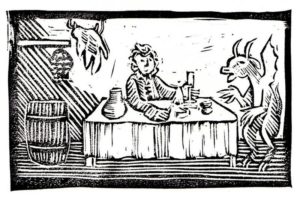
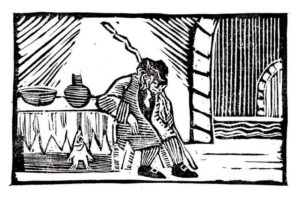 the arte mephitic campaign
the arte mephitic campaign